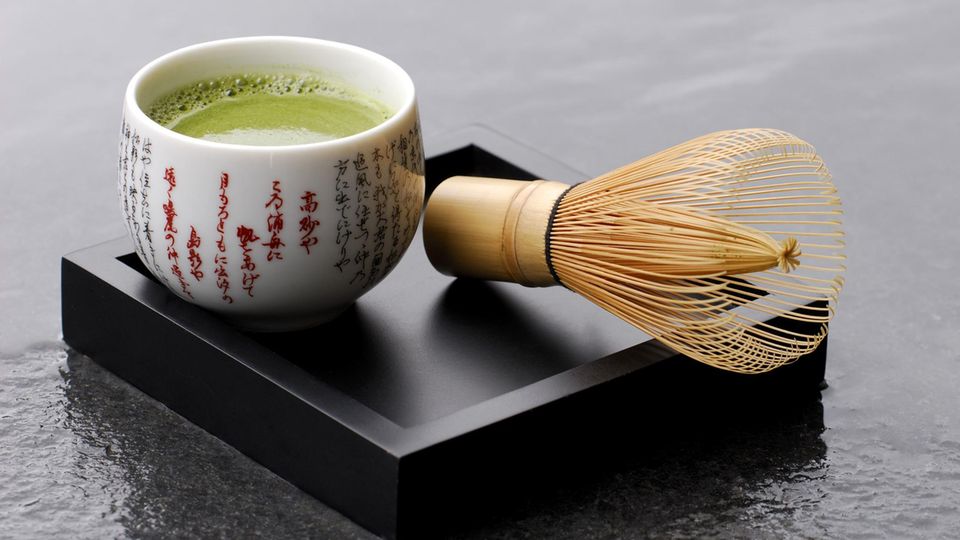Icetea
Cold Brew, Koori Dashi, Iced Tea: Making tea is the easiest thing in the world, right?
With Koori Dashi, the tea is poured directly onto the ice. Once it has melted, the tea is ready.
© P&T
Cold tea is the new summer trend. But there’s more to it than just a run-of-the-mill brew – it’s magic. We present three ways to really get the aroma out of the leaves.
So it’s no surprise that after coffee, tea is now experiencing a renaissance. Nowadays, some star restaurants even offer a tea alternative instead of wine accompaniment – cold tea, mind you. “The cold brew of a high-quality tea is like a glass of Bordeaux,” says Eduardo Molina, tea expert at “Paper & Tea”. What is meant is by no means a run-of-the-mill infusion. It has long been about more, about preparation methods such as cold brew, Koori Dashi and iced tea. But what is it really?
Cold brew tea
Is it all just cold coffee? Nope. The cold brew version is slowly becoming available not only in hip cafés for the bean, but more and more tea lovers are also pouring cold water into the leaves. This is an ancient concept: Mizudashi. A traditional method from Japan in which green tea is prepared with cold water.
Because behind the term “cold brew”, which sounds so incredibly innovative and urban, that’s exactly what it means. Instead of the usual hot water, you simply use cold water. That’s it. What comes out of it is what matters – a change in taste. A tea that has been brewed with cold water does not taste like one that has been prepared with hot water and allowed to cool. The tea extracts enter the water much more slowly through cold brew, which also changes the aroma. “The flavors develop more delicately, more intensely and also milder, because the bitter substances do not come out as strongly in the cold infusion,” explains Molina.
In other words: the cold infusion is gentler, but also more time-consuming and not for quick refreshment in between. “Tea is the drink of patience,” says Molina. Good aroma takes time. While tea made with hot water is ready to enjoy after a few minutes, cold brews have to steep for hours. “The lower the temperature, the slower the process,” says Molina. At room temperature that means about four hours of brewing time, eight in the refrigerator. (You can read more about the “Cold Brew” method here)
Koori Dashi – tea on ice
Mizudashi is one thing, but Koori Dashi is a completely different thing. To do this, fill a glass with ice cubes; according to Molina, it works best with crushed ice, and add the tea to it. Then it’s time to wait (again). Once the ice has melted, the tea can be filtered through a sieve. “The low temperature of the ice allows you to get the best out of the tea,” explains the tea expert. As with cold brew, Koori Dashi is a very gentle way of preparing tea due to the very decelerated process.
With green tea, for example, this has a special effect. The umami flavor and sweetness of the tea can develop better, and at the same time fewer bitter substances escape. The highlight, however, is that there is hardly any caffeine in the resulting drink. This means that green tea is also safe to drink for children and pregnant women.

Iced tea
Iced tea is the classic in the arrangement of cold teas. And also the variant that is quickest to implement. Everyone knows the variant of making tea, letting it cool down and later enriching it with ice cubes and garnishes. But there are alternatives. “There is one problem with cold brew and Koori Dashi: time,” says the tea expert. Even if you use boiling water, you have to wait until the tea has cooled down before it becomes a refreshing summer drink. Molino knows an abbreviation.
To do this, tea is brewed using hot water in the standard procedure. It is important that twice the amount of tea is used as with the usual infusion. After a few minutes of steeping time, top up with ice (to 200 ml of water = 200 g of ice) and – tadaaa – the tea is cold in seconds.
Incidentally, the English merchant Richard Blechhyden is said to have invented this. At the World’s Fair in St. Louis in 1904, he had problems brewing his tea in the summer heat. That’s how he came up with the idea of ice cubes. What was born out of necessity came with a profitable side effect. While a lot of the fresh flavor is lost during normal cooling, this is not the case with iced tea and flash freezing.
Tea maker test: Click here for the tea maker comparison.



